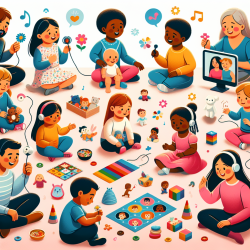In the vibrant world of a child's development, sensory processing plays a pivotal role. It is the ability to register, discriminate, adapt, and respond appropriately to sensory input from both the body and the environment. Understanding this process is essential for helping children navigate their surroundings with confidence.
The Eight Sensory Systems
To grasp the concept of sensory processing, it's important to understand the eight sensory systems:
- Olfactory (Smell) - Identifies safe versus harmful odors.
- Gustatory (Taste) - Works alongside olfactory to discern flavors.
- Auditory (Sound) - Processes sounds and aids in comprehension.
- Visual - Interprets sights and prepares for responses.
- Tactile - Involves touch sensations like pressure and temperature.
- Proprioceptive (Body Position) - Provides body awareness without visual cues.
- Vestibular (Movement) - Balances and senses movement.
- Interoceptive (Internal) - Detects internal bodily responses like hunger and thirst.
Sensory Processing Difficulties: Recognizing the Signs
Sensory Processing Difficulties (SPD) can manifest in various forms, affecting how children respond to stimuli. Approximately 1 in 20 children experience SPD, which is not yet a recognized medical diagnosis. Understanding these challenges helps caregivers provide better support.
Sensory Modulation Disorders
- Over-responsiveness (Hypersensitivity): Children may react excessively to stimuli that others find tolerable. This can lead to behaviors such as aggression or avoidance.
- Under-responsiveness (Hyposensitivity): Children may be unaware of stimuli or have delayed responses. They might appear withdrawn or passive.
- Sensory Craving: A constant need for sensory input that remains unsatisfied even after stimulation. This can lead to disorganized behavior.
Strategies for Supporting Children with SPD
The key to supporting children with SPD lies in creating a nurturing environment tailored to their needs. Here are some practical strategies:
- Become a 'Sensory Detective': Observe what stimuli your child seeks or avoids.
- Create Structured Environments: Predictability and organization help children feel secure.
- Proprioceptive Activities: Engage in activities that provide deep pressure input, such as hugging or lifting, to help children reach an optimal state of alertness.
- Tactile Strategies: Use firm touch or varied textures based on your child's needs—whether calming or alerting.
- Auditory Adjustments: Provide headphones during noisy events or play calming music to help focus attention.
Navigating Daily Challenges
Certain daily activities can be particularly challenging for children with SPD. Here are some tailored strategies:
- Dressing: Opt for seamless clothing and remove labels to reduce irritation.
- Bathing: Use firm touch and allow the child control over water temperature and flow when possible.
- Eating: Introduce new foods gradually and offer choices to reduce anxiety around meals.
- Sleep Routines: Incorporate massages or use heavier blankets for comfort before bedtime.
The Importance of a Sensory Lifestyle
A sensory lifestyle integrates frequent sensory opportunities throughout the day, helping children manage their responses more effectively. By understanding each child's unique needs, caregivers can foster an environment where children thrive emotionally and physically.
For more information on sensory processing and supportive strategies, please follow this link.










